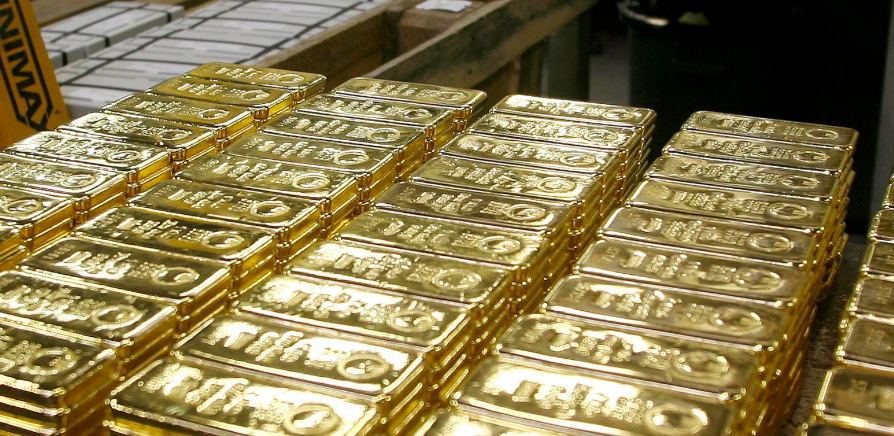Gold Hits Record Highs Again
Advertisements
In recent weeks, the global financial landscape has been significantly impacted by escalating trade tensions, particularly stemming from actions taken by the U.S. President. This has led to a surge in gold prices, which reached an unprecedented high of $2,942.70 per ounce during the Asian trading session on February 11. The rise in gold prices is not merely a reaction to immediate geopolitical events; it reflects a complex interplay of market dynamics that has set the stage for a long-term bullish trend in the precious metals market.
The catalyst for this recent spike in gold prices can be traced back to the President's announcement regarding tariffs. Specifically, the decision to impose a 25% tariff on aluminum and steel imports, coupled with the revocation of exemptions for key suppliers such as Canada and Brazil, has rattled markets. Additionally, a 10% tariff on imports from China and threats to extend tariffs to all imports from Canada and Mexico have heightened fears of slowing global economic growth, rising inflation, and tighter monetary policy. In such an environment, investors are increasingly turning to gold as a safe-haven asset, seeking refuge from the volatility that characterizes the current market landscape.
Since the President's re-election in November, gold prices have seen a remarkable increase. From a low of $1,809.50 per ounce on October 23, 2023, gold has surged by 63%. Moreover, since hitting a low of $2,536.71 per ounce on November 15, 2024, the price has risen by 16%. This sustained upward momentum is reflected in the increasing holdings in exchange-traded funds (ETFs), with the SPDR Gold ETF's holdings climbing to 27.92 million ounces as of February 7, up from a low of 27.55 million ounces on January 27.
While the immediate effects of trade tensions are clear, several structural factors are also underpinning the long-term bullish sentiment for gold. These include robust consumption demand from major markets, significant central bank purchases, and dynamic investment flows.
Consumption Demand: China and India at the Forefront

Chinese and Indian consumers account for more than half of the global demand for gold. In 2024, China's gold consumption is projected to reach 815.5 tons, marking a 10% decline from 2023. Conversely, India is expected to see a 5% increase in demand, reaching 802.8 tons. Together, these two nations will consume 1,618.3 tons of gold, representing 53% of the world's total demand. However, it is worth noting that while they continue to be dominant players, their influence may be waning. The reduction in China's demand could signify a shift where these markets may provide a safety net for prices rather than the driving force behind them.
Central Bank Purchases: A Sustained Source of Support
Over the past three years, central banks around the world have been aggressive buyers of gold. In 2024, net purchases totaled 1,044.6 tons, slightly down from 1,050.8 tons in 2023 but still significantly above the average of 473 tons per year from 2010 to 2021. This consistent demand from central banks reinforces gold's role as a critical asset in diversifying reserves and mitigating financial risk, especially in light of the unpredictable nature of U.S. policies. Countries may feel compelled to bolster their gold reserves as a buffer against financial uncertainties.
Investment Flows: Diversification and Hedging Needs
Investment flows represent another crucial driver for gold prices. As investors seek to diversify their portfolios and hedge against potential inflation spikes, gold remains an attractive option. The President's policy decisions not only inject uncertainty into the market but also threaten to elevate inflation, further solidifying gold's status as a reliable hedge.
The Dual Impact of U.S. Presidential Policies
The President's policies have a dual effect on the gold market. On one hand, they provide strong support for gold prices due to heightened demand for safe-haven assets. On the other hand, the erratic nature of these policies can lead to significant volatility. Investors are often caught off guard by sudden policy shifts or contradictory statements, resulting in rapid price fluctuations that can create both opportunities and risks.
The recent spike in gold prices should be viewed in the context of these broader structural factors rather than merely as a short-term reaction to political drama. The interplay between consumption trends in China and India, central bank strategies, and fluctuating investment patterns paints a complex picture of the gold market.
Looking Ahead: The Future of Gold
As we move forward, the gold market is poised to remain influenced by these dynamics. While the immediate impact of trade tensions can create volatility, the underlying structural factors are likely to sustain a bullish outlook for gold prices in the long term. The demand from central banks and the consumer markets in Asia will continue to play pivotal roles in shaping the market.
Moreover, the current geopolitical landscape suggests that uncertainty is here to stay, further enhancing the allure of gold as a protective asset. For investors, this environment necessitates a careful assessment of their strategies in light of ongoing developments. The complex interplay of economic factors, global politics, and market sentiment will undoubtedly influence the trajectory of gold prices in the coming months.
In conclusion, the record highs in gold prices are indicative of a confluence of immediate political actions and enduring market trends. As trade tensions escalate and the global economic landscape becomes more unpredictable, the demand for gold as a safe-haven asset is likely to grow. Understanding the multifaceted drivers behind gold's price movements will be essential for investors and analysts alike as they navigate this evolving financial terrain. The future of gold, shaped by both present challenges and historical precedents, remains a critical area of focus for anyone involved in the financial markets.